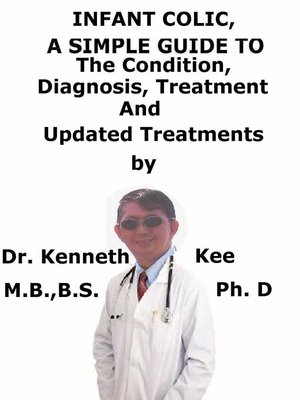Infant Colic, a Simple Guide to the Condition, Diagnosis, Treatment and Related Conditions
ebook
By Kenneth Kee

Sign up to save your library
With an OverDrive account, you can save your favorite libraries for at-a-glance information about availability. Find out more about OverDrive accounts.
Find this title in Libby, the library reading app by OverDrive.



Search for a digital library with this title
Title found at these libraries:
| Loading... |
This book describes Infant Colic, Diagnosis and Treatment and Related Diseases
Infant Colic or excessive crying is a frequent benign, self-limiting disorder that can happen in 40% of infants.
If the baby cries for longer than 3 hours a day, the baby might have colic.
Colic is not caused by another medical problem.
Many babies go through a fussy period.
Some cry more than others.
20% babies cry enough that people call them colicky.
Colic normally starts when babies are about 3 weeks old.
It becomes worse when they are between 4 and 6 weeks old.
Most of the time, colicky babies get better when they are 6 weeks old, and are completely fine by the time they are 12 weeks old.
While it is one of the most distressing problems of infancy, it has no clear cause, no gold standard remedy or preventative action.
It is common for infants to cry more during the first three months of life, with a mean duration of crying of two hours per day.
When the baby is aged 10–12 weeks, the mean duration of crying decreases to an hour per day, but variations can occur.
Wessel's criteria define colic as crying for no apparent reason lasting for:
1. More than 3 hours per day,
2. More than 3 days per week,
3. Longer than 3 weeks
It is worth noting that while colic is frequent, many infants do not fulfill all 3 criteria strictly.
Doctors should be aware of parental perception and coping when assessing the infant.
Especially in the local context where infants may have more than one caregiver, colic can refer to crying that is causing distress to caregivers.
Causes:
The most probable causes of infantile crying are:
Non-pathological Cause of crying:
1.Lack of Sleep
Normal Sleep Requirements
Birth to 2 months: 16 hours a day
2 to 3 months: 15 hours a day
2.Hunger
Frequent feeding (






